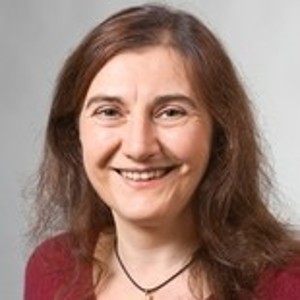
Technical University of Munich
TUM School of Natural Sciences
James-Franck-Str. 1/I
85748 Garching
Tel. +49 89 289 12353
nora.brambilla[at]ph.tum.de
Research WebsiteDescription
Reseach focus: effective quantum field theories, strongly coupled systems, computational methods
Effective Quantum Field Theories (EFTs) are the state-of-the-art tools for analyzing physical systems that contain many different energy or momentum scales. Such systems are the rule, rather than the exception, from the "high"-energy domain of Particle and Nuclear Physics to the "low"-energy domain of molecular, atomic and condensed matter physics.
In our group and in collaboration with PD. Dr. Antonio Vairo, we study Effective Field Theories and Renormalization Techniques. Our research targets innovative ideas in particle and nuclear physics and envisages spin-offs to condensed-matter, atomic and molecular physics and quantum optics.
Some research topics of our group that well complement and integrate the activities of the Munich Quantum Group are:
Nonrelativistic effective field theories
Nonrelativistic systems are of great importance in atomic, molecular, nuclear and particle physics, including the physics of beyond the Standard Model and dark matter models. Indeed, they compose a large part of all matter. Such systems need to be addressed with Nonrelativistic effective field theories (NREFT). In atomic physics, NREFTs derived from Quantum Electrodynamics allow precision calculations of simple atoms like positronium, or exotic ones like pionium or muonic hydrogen. In particle physics, NREFTs like Heavy-Quark Effective Theory (HQET), Nonrelativistic Quantum Chromodynamics (NRQCD) and potential NRQCD (pNRQCD) exploit the fact that the top, bottom and chark quark masses are larger than the hadronic scale, to make model independent predictions addressing bound state energies, production and decay mechanism, and the form factors required by new-physics searches.
Our group had developed the NREFT called pNRQCD and several new nonrelativistic effective field theories for applications to several nonrelativistic systems. We recently developed an EFT for the new exotic resonances (X. Y. Z states) discovered at the Large Hadron Collider at CERN and we obtained an EFT description of van der Walls and Born-Oppenheimer in QED.
QCD at finite temperatures
Quantum Chromodynamics (QCD), the theory which describes the strong interactions between quarks and gluons, has a very particular feature called confinement. This property states that quarks or gluons can never be isolated and observed individually (at least at low energies), they are always confined inside bound states called hadrons. However, at sufficiently high temperatures or densities confinement is broken and quarks and gluons appear outside of hadrons forming a new state of matter, the so-called quark-gluon-plasma (QGP) that is recreated in heavy ions collisions at the Large Hadron Collider at CERN. This QGP was the state of matter microseconds after the Big bang. This QGP poses many interesting questions. What is its Equation of State - what are the pressure, energy and entropy densities of the thermal medium? How do these collective properties depend on the temperature? How does the thermal medium affect properties of particles in the medium? What are the transport properties of quarks and hadrons in the medium and how can they be calculated?
The tools we use to investigate these issues are effective field theories (EFTs) and numerical lattice QCD. In a system of a few heavy quarks inside a plasma of light quarks and gluons there are several scales present: the heavy quark mass, the average distance between the heavy quarks, the temperature, thermal gluon masses, etc.
One of the phenomena that we study is the suppression of a quark-antiquark bound state inside the expanding quark gluon plasma implementing effective field theory techniques in the framework of open quantum system. This is a non-equilibrium problem and cannot be directly attacked with lattice techniques.
Computational Tools
Lattice gauge theory formulates quantum field theory on a grid in spacetime. This approach enables a numerical treatment of Quantum Chromodynamics (QCD-the field theory of strong interactions) and has made great strides in the past decade.
In our group, we explore the interplay of effective quantum field theory and numerical lattice gauge theory and, thus, nurture two of the most powerful theoretical tools and brings them together in a fruitful way. Effective field theories are based on factorization of scales and in strongly interacting theories some low energy scales are nonperturbative demanding a numerical computational method. For this reason, we started the TUMQCD Collaboration (in collaboration with P. Petreczky from BNL, USA and Kronfeld from Fermilab USA) that performs calculations on computing resources managed and allocated by C2PAP and Supermuc at the Garching Campus.
The present pivotal interests of the TUMQCD collaboration are:
- A comprehensive understanding of heavy hadrons at zero and finite temperature, as well as of the QCD vacuum at zero temperature and the thermal QCD medium at finite temperature.
- Precise determinations of the standard model parameters. Deeper insights in this area of studies is expected to have an immediate impact on the analysis of experimental results from facilities at LHC, B factories, as well as ? and charm factories, such as CMS, ATLAS, Belle and BES.